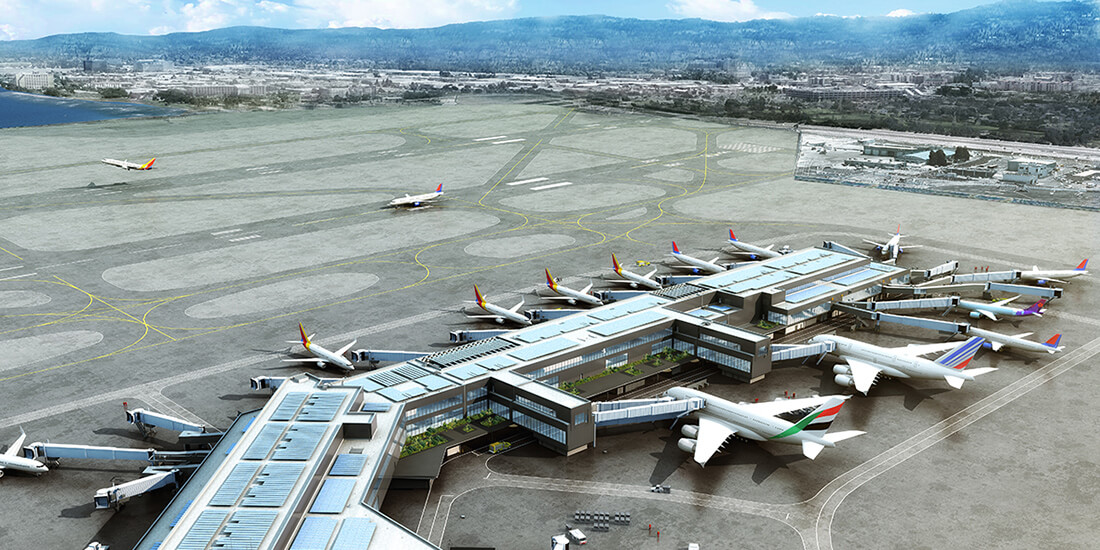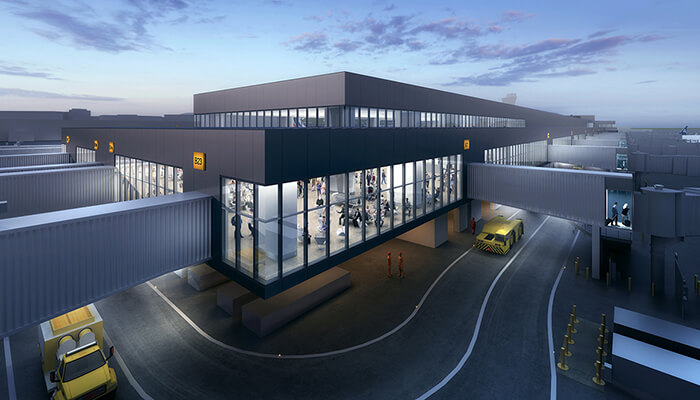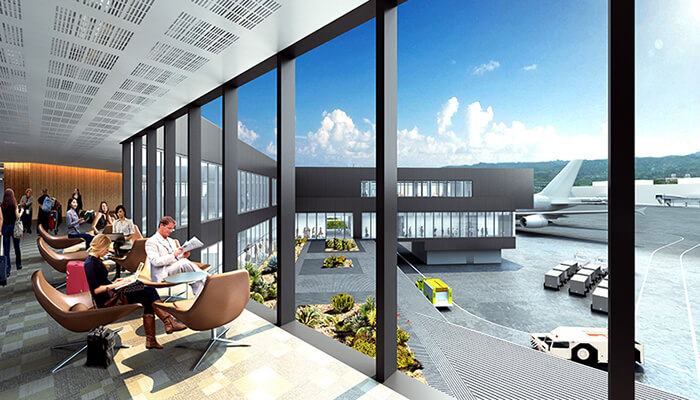The San Francisco International Airport Terminal 1 - Boarding Area B
Project
Published by:
Datasheet
Description
The airport spends in a space to gather both the design team and owner-representatives all in one place. That allowed the team to communicate with each other and solve every problem that came up.
The work is going beyond the borders of this $2,4 billion project. Constructed in 1963, the first Terminal 1 will be destroyed and the new Terminal 1 Center and Boarding Area B will be assembled by two design-build teams. Led by the construction contractor Austin Webcor Joint Venture, the team will be responsible for planning the 550K square foot boarding area, 27 gates, concessions, and amenities and accommodating an innovative new baggage handling systems for this future world-class passenger experience.
The project team has created a Virtual Big Room, additional cloud space so all the right talent from the partner firms can work collaboratively. This virtual collaboration is being used to clear up conflicts between SFO’s vision, priorities and project pressures.
Keeping the Airport Operations running
Part of the original terminal was improved to work as an interim boarding area for passengers while the new structure was under construction. However, fit all the construction activities in the nearby location was still a challenge because the team wanted to use every last square foot of the space available. All the steps of the operation had to be coordinated with both the contractor and operations.
Up to date, SFO has held nearly 60% of the terminal's capacity along the construction. Parts of the pathway are being built to keep the terminal open during the works. Worried about the possible confusion of the passengers, the SFO is taking into consideration to cover temporary walls, AirTrain platforms, and other corridors with arts and information about the upcoming Terminal 1 project.
The best solutions
The Virtual Big Room is the place where all the conflicts of design ambitions, budget limitations and what can actually be built while the Terminal 1 is working, are being solved. The design team schedules weekly BIM meetings to exchange files and information, deal with major problems, identify preferences and coordinate solutions to be added to the critical task timeline. The contractor’s 4D model projects construction sequencing and scheduling.
The new Terminal will include a new solution that will be beneficial for both SFO baggage services and passengers that are tired to get their luggage lost. We’re talking about the Individual Carrier System (ICS), the first of its king the States, will improve the baggage handling and security. This means that will be more space available for the RFID-trackable baggage containers and conveyance system. This system is also more energy efficient than traditional baggage conveyors.
Type of Work
- Civil work














